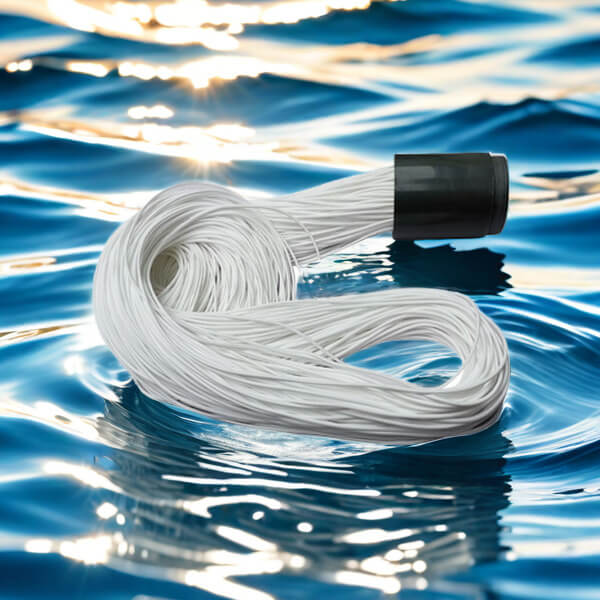What issues should be considered for MBR membrane calculation?
MBR (Membrane Bioreactor) technology combines membrane separation and biological reaction processes, and has the ability to efficiently remove pollutants. The article analyzes the principles, applications, advantages, challenges, future development, and practical cases of MBR membrane calculation from multiple perspectives. By elaborating on these aspects in detail, readers can better understand the working mechanism of MBR membrane computation and its important role in modern water treatment. The article summarizes the potential and prospects of MBR membrane calculation in water treatment technology, emphasizing its importance in sustainable development.
The principle of MBR membrane calculation
The core principle of MBR membrane computing is to combine membrane separation technology with biological treatment processes. Traditional sewage treatment methods typically require multiple treatment units, while MBR membranes calculate the selective permeability of the membrane and directly achieve solid-liquid separation in the reactor. This method not only improves processing efficiency, but also reduces the footprint. The pore size design of the membrane prevents pollutants from passing through, ensuring the stability of the effluent quality.
MBR membrane calculation also utilizes the principle of biodegradation. In the reactor, microorganisms can effectively degrade organic matter and convert it into harmless substances. By adjusting the operating conditions of the reactor, such as temperature, pH, etc., the growth environment of microorganisms can be optimized, thereby improving treatment efficiency. The principle of MBR membrane calculation has laid the foundation for its application in water treatment.
Application of MBR membrane calculation
MBR membrane computing has been widely applied in various fields, including urban sewage treatment, industrial wastewater treatment, and recycled water utilization. In urban sewage treatment, MBR membrane calculation can effectively remove pollutants such as nitrogen and phosphorus, meeting increasingly strict discharge standards. Its effluent quality is superior to traditional treatment methods and can be directly used for recycled water reuse.
In industrial wastewater treatment, MBR membrane calculation also performs well. Many industrial processes generate wastewater containing high concentrations of organic matter and toxic substances, which traditional treatment methods often find difficult to effectively remove. MBR membrane calculation, through its high selectivity and biodegradability, can achieve efficient treatment and reduce its impact on the environment.
MBR membrane calculation is also of great significance in the utilization of recycled water. With the increasingly serious problem of water scarcity, using MBR membrane to calculate and treat regenerated water can not only alleviate water resource pressure, but also promote sustainable development. The use of recycled water has broad prospects in fields such as agricultural irrigation and industrial cooling.

Advantages of MBR membrane computing
One of the main advantages of MBR membrane computing is its efficient processing capability. Compared with traditional sewage treatment methods, MBR membrane calculation can achieve higher removal rates in a shorter period of time. This is due to the high selectivity of the membrane and the synergistic effect of the bioreactor, which enables pollutants to be fully degraded in the reactor.
Another significant advantage is the small footprint. Due to the MBR membrane computing, multiple processing units are integrated into one reactor, significantly reducing the required equipment and footprint. This feature makes MBR membrane calculations particularly suitable for urban and spatially limited areas.
The stability of effluent quality calculated by MBR membrane is also one of its important advantages. Due to the physical separation characteristics of the membrane, MBR membrane calculation can effectively remove suspended solids and pathogens, ensuring that the effluent quality meets various usage requirements. This stability makes it of significant application value in the utilization of recycled water and environmental protection.
The Challenge of MBR Membrane Computing
Although MBR membrane computing has many advantages, it still faces some challenges in practical applications. Membrane fouling is a major issue in MBR membrane calculations. As the processing time prolongs, fouling will accumulate on the membrane surface, leading to a decrease in flux and an increase in energy consumption. How to effectively control and clean membrane fouling has become a research focus.
The operating cost of MBR membrane calculation is relatively high. The cost of membrane materials and the regular replacement and maintenance expenses of membranes limit the economic viability of MBR membrane calculations. For some small-scale sewage treatment projects, how to reduce costs to achieve sustainable operation is an urgent problem to be solved.
The maturity and promotion of MBR membrane computing technology also face challenges. Although it has been widely used in some developed countries, in developing countries, due to technological and financial limitations, the promotion of MBR membrane computing still requires more support and investment.
The Future Development of MBR Membrane Computing
The future development direction of MBR membrane computing mainly focuses on innovation of membrane materials and optimization of technology. The development of new membrane materials will help improve the fouling resistance and service life of membranes, thereby reducing maintenance costs. The modification technology of membranes will further improve the processing efficiency of MBR membrane calculations.
In terms of technological optimization, the introduction of intelligent control systems will make the operation of MBR membrane computing more efficient and stable. Through real-time monitoring and data analysis, operational parameters can be optimized to improve processing efficiency. By combining artificial intelligence and big data technology, the management and maintenance of MBR membrane computing will become more intelligent.
Summary and Induction
MBR membrane computing has shown great potential and application value in the field of water treatment. Through in-depth analysis of its principles, applications, advantages, challenges, and future development, it can be seen that MBR membrane computing not only improves the efficiency of water treatment, but also provides effective solutions for sustainable development. Despite facing some challenges, with the continuous advancement of technology and policy support, the prospects of MBR membrane computing remain broad and will play a more important role in water resource management in the future
